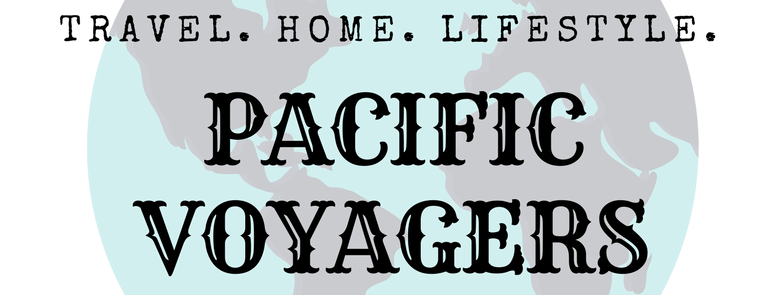Staffing is ultimately about people. After all, you want to find the right professionals for nonprofits who have shared goals and priorities and want their work to contribute to your larger mission. A strong workforce staffing plan arranges out current and future staffing needs. You ensuring that your professionals for nonprofits have the right number of people with the right skills in the right positions.
Enhance Your Non-Profit Potential With Developing Young Talent:
Of course, most nonprofits run on fairly tight budgets. Consider whether you can fill gaps in staffing by increasing your current capacity, rather than adding new employees and therefore new salaries. Boost your staff to encourage a long-term future with your organization. Provide challenging assignments that have a knock-on effect on professional development. Move employees into new roles that’ll help them to expand their skills set. Support these efforts with accurate and specific job descriptions, and clear and regular performance assessments. Both can go a long way toward encouraging employee commitment and productivity.
The key to this process is employee appointment. In the words of well-known management experts, an organization must make sure that its mission, its values and its objectives are real and meaningful to people rather than just public relationships and fustian. Success here results in actively engaged employees. Although you can’t force appointment, you can show employees how their work makes a difference. You can also ask what the work means to them. You keep the conversation going to short-term, a sense of purpose and a continued desire to make your organization’s vision a reality.
Make Strategies For New Hires:
If you’re able to recruit new staff members, keep the same principles in mind. Talented people often make the choice to work for nonprofits because their personal goals extend beyond a salary. Nonprofits tend to be good workplaces where hard work is appreciated and employees serve a greater purpose than profits and stock prices. When talking to prospective employees, articulate your organization’s mission and vision. Talk about the various ways of your organization that helps to improve people’s lives. To help your recruiting efforts, consider developing an employee recommendation rewards program. Your new client knows the nature of the company. You will create an image of how a new employee is going to be a successful match for the company?
Technology Will Make A Huge Difference In Helping Your Nonprofit Workers:
The use of internet community planning tools is an interesting new choice. It has appeared that they will provide all the mechanisms of hiring best professionals for nonprofits staff development with safely, effectively and affordably. Nonprofit turnover is twice that of for-profit companies. It is not because of reasonable salary inequities. In several national research surveys reported that their organization that professionals for nonprofits left because they felt a lack of engagement with the broader goals and processes of the nonprofit for which they worked.
Which Are Some Of The Best Methods For Developing A Workforce Growth Program?
Building a workforce development plan that fits with the company needs some thought about what outcomes you ‘re looking with and whether you’re more likely to achieve? Work progress also isn’t a one-time event. To continue your staff’s growth, training and coaching must be ongoing. Keep in mind that those doing the coaching will likely need to be trained, too.
Begin A Personnel Training Plan for Your Nonprofit, Find the Following Best Practices:
Train employees to achieve the ambitions and business processes. You can divide the main goals of the company into tiny, achievable priorities. Training sessions would include these topics, as well as specifically specified task requirements and working practices.
- Carefully Manage Training: set up a process of positioning for new employees. Make sure the employees have access to knowledge about their jobs and the resources they need to do their job.
- Learn To Engage: that requires various forms of instruction you receive. Our Teacher directed educational sessions on the instruction of other skills. But they providing ongoing coaching and assigning new projects. Work challenges can also be effective, especially in the case of leadership development. It is more important, look for ways to make training interesting and fun.
- Reward Learning: Not every staff member knows the value of learning. Show your staff that training pays off by being excited about training opportunities. You review their efforts in annual assessments. You also encourage teamwork that allows staff members to learn from each other.
- Create Career Paths And Rankings: You need to provide job enhancement opportunities. Encourage staff to develop their existing abilities and expertise in the planning of promotions.
- Increase Social Relations: Boost closer colleague connections and employee engagement which ultimately supports work development through activities such as holiday cookie exchanges, theme inspired costume contests, and pet photo contests and so on.
- Focus on The Future: Including strategy and corporate strategies, your hiring program should become part of the organization live paper collection. Start considering it regularly, update it as your nonprofit grows and develops. Trying to encourage staff to make the most of advancement
- Incentives: Local non-profits are unable to have resources for workforce growth due to time limitations and expenditure limits. It’s easier for you to invest in your employees. This does not have to be costly or time-consuming, though. There are development tools that can initiate the best management service and preparation with the professionals for nonprofits staff members.
Why Is Staff Training Important?
Training your staff benefits everyone. Your employees will learn, grow, and test themselves. Training develops new skills and they become more capable members of your staff. Staff development supports series of planning efforts. Work also shows that the performance of workers improves:
- efficiency of workers
- placement of employees
- Recruitment of workers
Which Are The Various Types Of Career Advancement Programs?
Commonly, work development projects can be separated into one of 4 categories, such as:
- On-The-Job Preparation: unstructured and casual instruction.
- Learning And Development: carried out properly
- Learning In Expertise And Efficiency: included in the professional growth plan
- Capability Advancement: Focus on the growth of business and organizational abilities. Tiny entities prefer to focus on mentoring programs and developed services and skills.







 We are all about travel and lifestyle over here at Pacific Voyagers. I’m Jen and this is my blog, although you will see a lot of posts written by my blogging dream team on topics like travel, life, beauty, home, budgeting and much more.
We are all about travel and lifestyle over here at Pacific Voyagers. I’m Jen and this is my blog, although you will see a lot of posts written by my blogging dream team on topics like travel, life, beauty, home, budgeting and much more.




